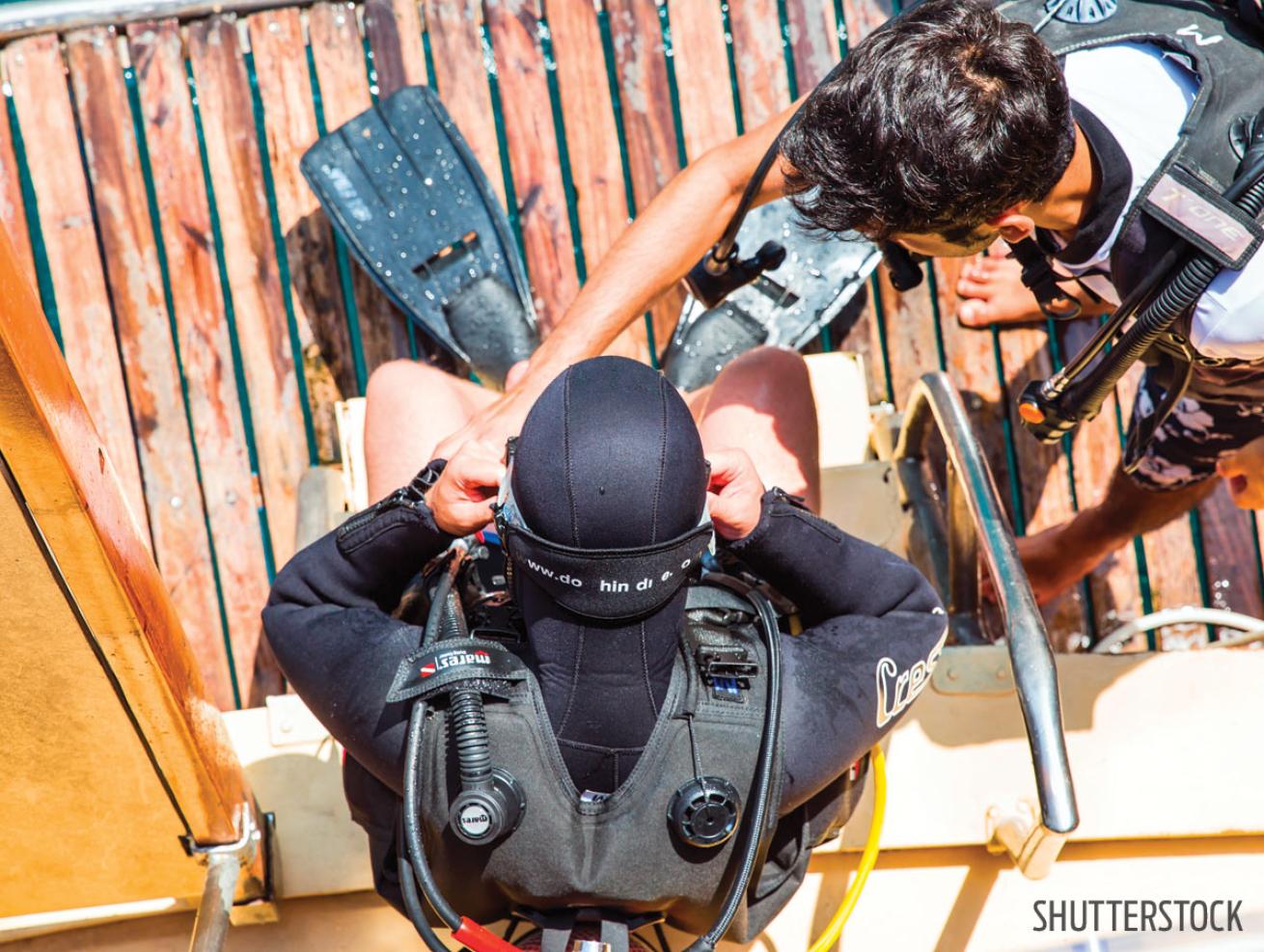Scuba Diving Tips: Getting Your Dive Weight In Check

ShutterstockGEAR CHECK
How do you find the right weight for you? The general rule is to carry lead that amounts to 10 percent of your body weight, but that method can fall short when a factor like wetsuit thickness comes into play.
Finding the perfect amount of weight can be a big challenge for divers. Many people wear more lead than necessary, adding excess air to their BCs to stay neutrally buoyant. But how do you find the right weight for you? The general rule is to carry lead that amounts to 10 percent of your body weight, but that method can fall short when a factor like wetsuit thickness comes into play. Here are five tips to help you dial in the magic number every time.
ASK THE DM FOR ASSISTANCE
If you’re on a dive boat, let your divemaster know you’d like to do a weight check prior to the dive. In most cases, he’ll be happy to help you get in the water ahead of the dive, and give or take extra bricks as you dial in.
DO A WEIGHT CHECK
Gear up and enter the water wearing your usual amount of weight, with your BC inflated. Float upright on the surface with your head above the water, and release the air from your BC as you take a deep breath from your regulator. If you sink quickly below the surface, you’re overweighted. If your head stays above water, you’re underweighted. If you sink to mask level, you’re just right.
ADJUST
Inflate your BC and swim to the boat to add or remove a couple of pounds accordingly. Once you’ve made your adjustment, complete the weight check again. Continue these steps until you float at mask level with an empty BC and a full breath of air in your lungs. Pay attention to your breath: You should descend slowly as you exhale.
GET DOWN
When perfectly weighted, it’s normal for divers to need a little extra help descending through the first few feet of water. You can use your hands to push or a down line to pull yourself down those first few feet, or simply descend head down and kick toward the bottom.
ADJUST BUOYANCY BY BREATHING
On the bottom, you should need very little air in your BC to stay neutrally buoyant. In fact, skilled divers can control their buoyancy almost entirely through their breathing — inhaling slowly to rise in the water column, and exhaling slowly to sink softly to the bottom.
Looking for more tips? Here are 5 ways to help you conserve air.










